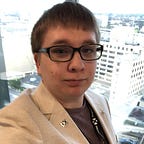Temporal Event Mass Theory — Predicting Future Events
Predicting the Future using Physics
Normally, I write about IT, computer science and computing in general. A few days ago, however, a theory came to me that I feel inclined to share with the community.
A bit of a disclaimer before we continue: I am in no way an astrophysicist, my education is in computer science and engineering. Any thoughts on this subject, for the most part are pure theory. However, most scientific theories start out in this raw format anyway and are then reviewed by the scientific community.
So, before we go into it, a bit of context: I have always enjoyed physics related topics. I found that it was easier for me to understand complex physics and scientific related concepts than it was for me to understand collage level math or other topics of that level.
Keep in mind that this is a rough draft of this idea that I simply thought up of overnight and made logical assumptions to make it work, so there may be some polishing required before this goes into a paper of any kind.
A few days ago, I was going over some research I had previously done on the concept that any amount of mass can exert some amount of pressure onto the spacetime fabric, causing a “dent” in the fabric. Imagine that two people are holding a blanket, one person on each side. Now imagine putting a bowling ball onto the blanket. The bowling ball would obviously sink into the blanket, creating a depression in it.
Scientists theorize that the same concept applies to stellar objects, such as the Earth or other planetary bodies. Because of the Earth’s mass, it sinks into the spacetime fabric and warps it. The theory is that when this occurs, the warping of the fabric can cause waves or ripples in the fabric which can in theory, be detected (much like dropping or placing an object into water can cause ripples and waves).
Now let’s apply this concept to events in the temporal timeline (events that happen in the future, or in the past). The idea is that the spacetime-based temporal fabric can “register” events that happen within the adjacent timescale much like earthquakes are detected and located using remote sensing technology. There would need to be a system that can detect “ripples” in the temporal fabric and correlate them with actual events.
I would imagine that only events of a certain magnitude can be accurately detected and identified as the rest of the timeline would pretty much only be “noise” from other events or temporal distortions.
Now, let’s look into the actual remote sensing. This theory assumes that we are currently traveling through time in an entropy bubble, a bubble of self-contained spacetime that “travels” along a timeline. In front of the bubble, there are events that have not happened it, or the future. In the back of the bubble, is the past. In order for sensing of any kind to work, one must assume that sensing outside of this bubble is actually possible and that the entropic boundary conditions can be determined to make the sensing possible. In this concept, the boundary conditions can be defined as the interaction of the entropy bubble with external spacetime and any propulsive forces that move the bubble forward.
One more concept that we need to define is the fact that events are created ahead of the bubble and remain “visible” after the bubble. This would assume that events are created either ahead of the bubble (and can be detected) and the bubble eventually runs into them or the events are created at the entropic boundary, causing a change in boundary conditions that can also be measured.
So far, we have made the following assumptions in order for this theory to work:
- The warping of the spacetime fabric can cause ripples. These ripples can be created from even the smallest interaction.
- Those ripples can be detected and remote sensing outside on the entropy bubble is possible.
- Events occur in various magnitudes that make distinguishable patterns in the temporal fabric.
- We are currently in a “bubble of entropy” that has discernible boundaries and predictable boundary conditions.
- Sensing outside the bubble is possible.
- Events are created ahead of the bubble.
So far so good, we have a semi-solid bases from which to derive a scientific theory. But, there are a few problems with the concept of sensing events ahead of time: the fact that there are multiple dimensions in which events can occur, the fact that those dimensions overlap, and finally because we are quite simply violating cause and effect (at least in the conventional way of thinking). Another issue was brought up by someone who peer-reviewed this idea: and that is the fact that a baseline would need to be established before any event sensing was preformed.
Obviously we have the problem of scale in this scenario. We would need a “snapshot” of the quantum state of everything in the universe, as event influencing factors could come from anywhere. This is obviously an impossible task as we do not know everything in the universe. However, even if we did, the model would only be valid for several nanoseconds before the baseline was out of date. For these reasons, this model covers only the earth itself and the surrounding spacetime, thus allowing for more accurate quantum state baselines.
More will come on this theory, but for now this is what I wanted to share with the community. The benefits for predicting events ahead of time are self-explanatory, the question is, can we do anything about these events ahead of time?
Stay tuned for more…
